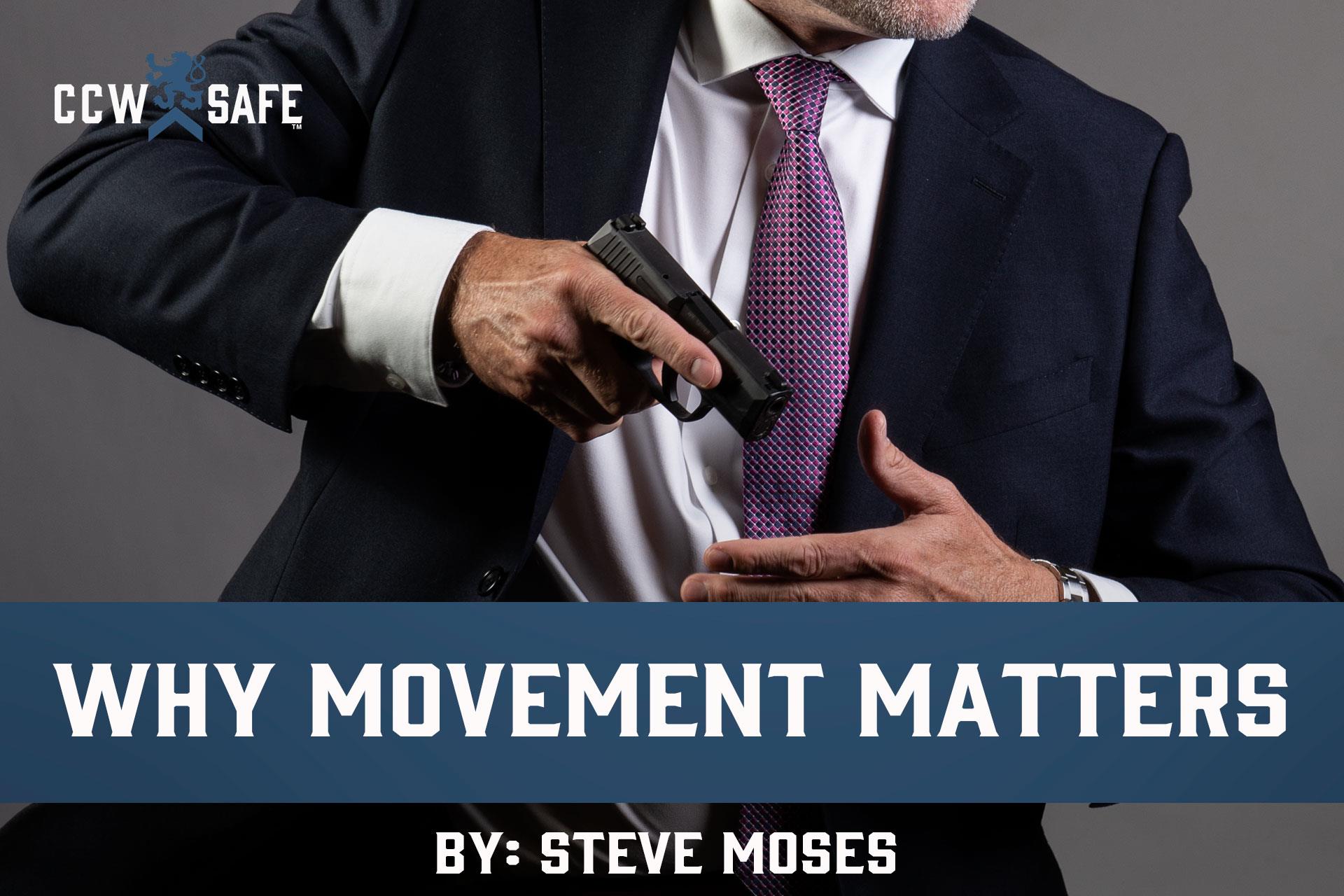
Posted on December 7, 2020
WHY MOVEMENT MATTERS
WHY MOVEMENT MATTERS
I am not a big fan of using the term “survive” when it comes to defining it as the primary objective of a trained concealed carrier if forced to defend him or herself if physically attacked by another. People have “survived” horrific injuries and extreme mental stress at the hands of others without taking one positive step towards proactively defending themselves. Instead, I prefer to use the term “prevail.” I believe that it is possible for a concealed carrier to prevail if criminally assaulted without ever firing a round if they take proper physical actions at the correct time, and if forced to use their concealed handgun in lawful self-defense they can increase their chances that they will not be injured or killed while putting themselves in a better position where they can bring accurate fire to bear.
Defensive skills are important, but no less important are defensive tactics. If I want to impress a new concealed carrier I might define tactics as “skillfully manipulating time, distance, cover, concealment, angle, and elevation so that I get a turn and my adversary does not,” or more generically as “the means used to achieve a desired objective.” However, what I am mostly talking about when it comes to personal self-defense is surprising my attacker and obtaining a superior position (which may be momentary at best) where he or she is less able to successfully achieve their objective (effectively use unlawful physical force) and I am more able to achieve my objective (deter, disengage, or defend).
Many criminal assaults take place in transition areas. Simply put, transition areas are those locations in which strangers may move about when transitioning from one base of operations to another. Good examples are parking lots, parking garages, sidewalks, streets, and gas stations. In most instances, the opportunity for a concealed carrier to immediately use cover is extremely limited. This suggests that movement may be one of the best tactical options available to concealed carriers who find themselves being stalked by or actually accosted by one or more violent criminal actors. Executed properly, tactical movement in and of itself may present a problem for the attacker (moving targets are harder to hit), momentarily catch said attacker by surprise, and increase the distance between the two parties (which can also make the defender harder to hit).
There are multiple ways that students can move based upon the circumstances, including not limited to the following:
- The concealed carrier bolts for cover as quickly as possible without drawing the gun. Once they have arrived behind cover the concealed carrier takes a position at least one full arms-length away (more is better), draws, and maintains as much of the body and head behind cover as possible while tracking the position of the attacker using the eye closest to the edge of whatever he or she is using for cover. The concealed carrier can then shoot from cover, stay in place until the attacker has left the area, or select and move to an even more defensible position.
- The concealed carrier simply turns and runs laterally while drawing their handgun. Once the proper grip is established he or she can stop, plant their feet, and turn while completing the draw and preparing to engage the target. The goal is to create distance as quickly as possible while being a harder target to hit until such time that he or she can shoot accurately. This might be applicable to a scenario in which the other person is still approaching and already has a gun in his or her hands, is in the act of drawing their gun, or is perhaps shooting.
- The concealed carrier steps rapidly off-line one or two steps as they draw the handgun in order to perhaps catch the criminal offender who is only one or two yards away off-guard while their attention is momentarily diverted. I caution against using this technique if the concealed carrier is still having to put conscious effort into how to grip, draw, and get the concealed handgun into position where they could actually shoot it accurately. Otherwise, this may turn a slow presentation from the holster into a really slow presentation from the holster. It is important in my opinion that the concealed carrier give some thought as to delay taking this initial action until such time that they can consistently execute a robust draw that is reasonably quick.
Running away from danger of any kind is already a normal human default response. Incorporating the act of smartly “running away” into our bag of defensive tactics might be the one thing that makes a difference on that day a concealed carrier is stalked by those individuals who simply do not care if their contemplated actions may harm or kill others.
 |
Steve MosesSteve Moses has been a defensive firearms trainer for over 26 years and is a licensed Texas Personal Protection Officer with 7 years of experience performing as shift lead on a church security detail for a D/FW area metro-church. Steve is a co-owner and Director of Training for Palisade Training Group, LLC based in Dallas, Texas. Moses is a retired deputy constable and spent over 10 years on a multi-precinct Special Response Team. He owns multiple instructor certifications, including Rangemaster Advanced Handgun Instructor and Defensive Shotgun Instructor, Red Zone Knife Defense Instructor and Adaptive Striking Foundations Instructor, Modern Samurai Project Red Dot Sight Instructor, and State of Texas Personal Protection Officer Instructor. Steve holds a BJJ Brown Belt in Relson Gracie Jiu Jitsu. He is a content contributor for CCW Safe and writes weekly articles on various subjects of interest to concealed carriers. Moses shoots competitively and holds an IDPA Expert rating. Steve is an annual presenter at the Rangemaster Tactical Conference. |